I told myself not to look up. “One foot ahead of the other” I told myself. That’s all I’m going to focus on – looking up to see the snaking vertical trail that lies ahead of me might destroy the morale I’m going to need to push my oxygen-starved body up a switch-back laden trail over 4500 meters above sea-level through the Salkantay Pass affectionately dubbed the “Gringo Killer” by the local guides. With a wad of rolled up coca leaves stuffed in my upper cheek to help alleviate the symptoms of altitude sickness, I huffed my way up the Gringo Killer, and made it to the top of the Salkantay pass 4630 meters above sea level. Salkantay means “Savage Mountain” in Quechua the local indigenous language. As I surveyed the natural majesty around me at the top of the Salkantay pass, I felt a wave of pride mixed with relief roll over me as I realized I had overcome one of the most challenging tests of the Salkantay Trek to Machu Picchu.



The Salkantay trek to Machu Picchu is a challenging 75km hike from the town of Soraypampa (approx 3 hours from Cusco) to the Citadel of Machu Picchu. I elected to do the 5 day Salkantay trek to Machu Picchu. While there are options to do the trek from as little as 3 days, to as long as 7 days, the 5 day trek is one of the most popular lengths for this multi-day hike.

Contents:
- Salkantay Trek vs. Inca Trail Trek
- Pre-hike preparations and logistics
- Day 1: Cusco – Humantay lake – Soraympampa: 13KM hiking
- Day 2: Soraympampa – Salkantay Pass – Chaullay Camp: 22KM hiking
- Day 3: Chaullay – Santa Teresa: 16KM hiking
- Day 4: Santa Teresa – Llactapata – Hidroelectrica – Aguas Calientes: 22KM Hiking
- Day 5: Machu Picchu
- Recommended Tour
- Packing List for the Salkantay Trek to Machu Picchu
- Final thoughts on the Salkantay Trek to Machu Picchu
Salkantay Trek vs. Inca Trail Trek:
One of the big debates for trekking to Machu Picchu is whether to do do it via the Inca Trail or via another route such as the Salkantay Trek. Both have a set of pros and cons to be considered:
Inca Trail to Machu Picchu:
Pros:
- Was the actual trail used by the Incans to travel to Machu Picchu
- Shorter than the Salkantay Trek 40KM vs 75KM for the Salkantay Trek
- Lower altitude than the Salkantay trek (highest altitude 4215M vs. 4630M for Salkantay)
Cons:
- More expensive (depending on what you compare it to, it can be double the price, compared to a budget Salkantay Trek). This is due in large part, to the cost of the Inca Trail permit.
- Needs to be booked typically at least 2-3 months in advance – if not further out. Again this is due to the fact that the Inca Trail permit is limited.
- Lots of sections that are stone steps – if you don’t like climbing stairs – this part is not going to be fun for you.
Salkantay Trek to Machu Picchu:
Pros:
- Natural and varied scenery ranging from jungle to high mountain passes – no stone steps (until you get to Machu Picchu). The Salkantay trek is widely considered to be more naturally beautiful than the Inca Trail.
- Less expensive than the Inca trail (a budget Salkantay trek can sometimes be less than half the price of a similar class Inca Trail trek to Machu Picchu).
- As there are no limitations to the number of people who can be on the Salkantay Trail, you can make bookings on short notice – even just a few days ahead. Whereas the Inca trail needs to be booked months in advance.
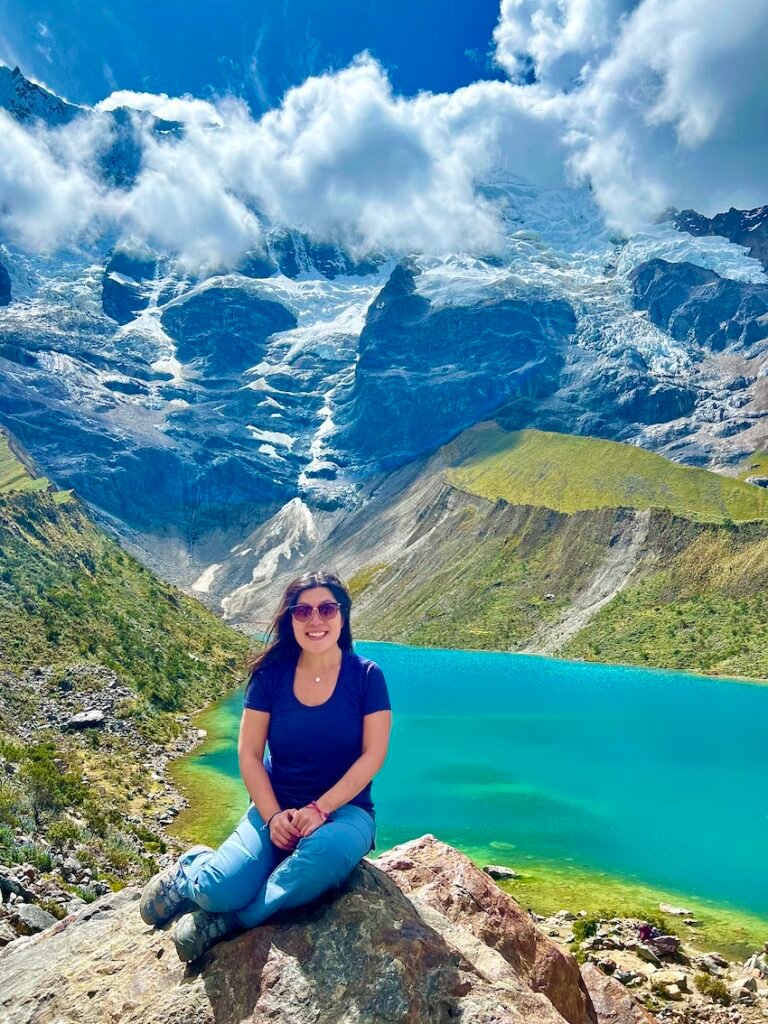
Cons:
- More strenuous than the Inca Trail. The varied and mountainous terrain encountered on the Salkantay trek is generally considered to be more strenuous than that of the Inca Trail.
- Does not have the historical significance that the Inca trail has
- Takes longer to hike – typically 5 days compared to 4 days for the Inca trail, and also has higher elevation than the Inca trail.
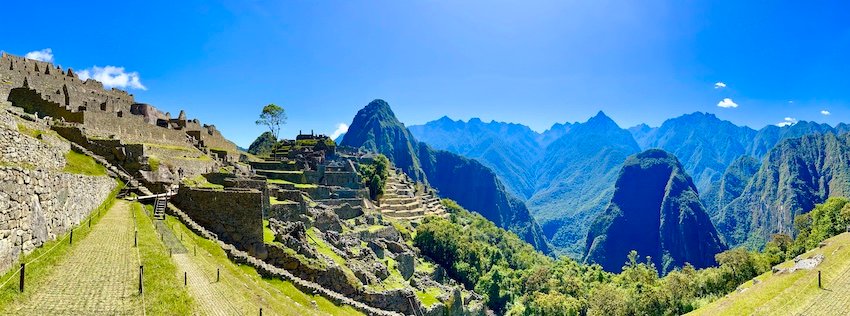
Pre-hike preparations and logistics:
Most tour companies will let you store your larger luggage in their offices, and also offer you a duffle bag for porters to carry up to 5KG of gear during the hike. This means you can easily carry just a small day pack for the duration of the hike. The smaller your day pack the easier your hike. You’ll need a sleeping bag rated at least 0C to -5C. If you don’t have one, most agencies will rent you one for $10 – $20USD for the duration of your trek. You’ll want to have the sleeping bag in your duffle for the porters to carry from camp to camp.
All meals will be provided during the hike and extra snacks and water are readily available for purchase at the different camps (along with nice extras like cold beer and showers).


Day 1: Cusco – Humantay lake – Soraympampa: 13KM hiking
The trek starts with an early morning pickup from Cusco at 5:45am for a 2 hour drive to the town of Mollepata where you’ll get breakfast and pay the entrance fee of 20 sols (to the local municipality). From here, the hike will take you to the Soraympampa camp where you’ll be served lunch. After lunch you’ll take 2 hour uphill climb to beautiful Humantay lake, where you will have a couple of hours to explore and take photos. After visiting the lake, you’ll have time to relax at camp before dinner is served.
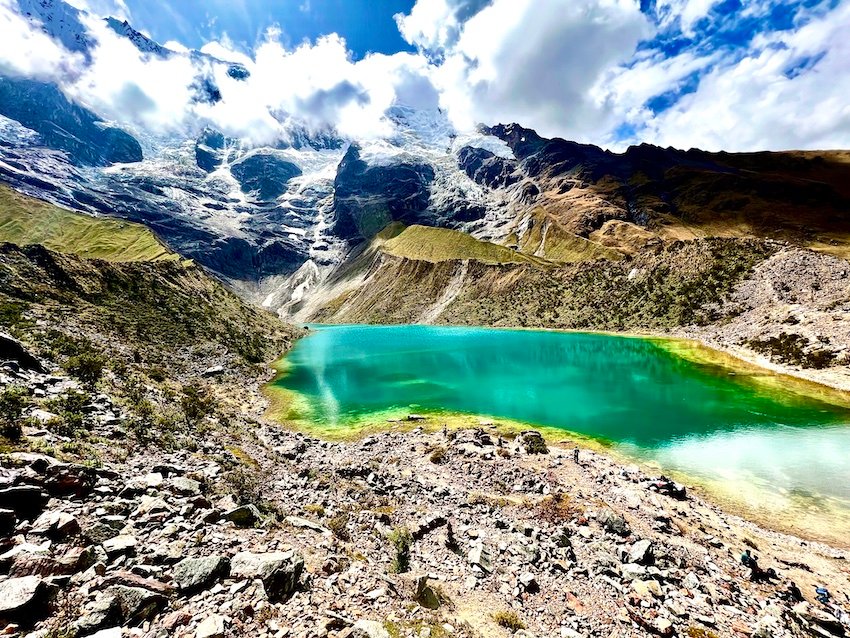
Day 2: Soraympampa – Salkantay Pass – Chaullay Camp: 22KM hiking
Today you’ll conquer the Salkantay Pass or the “Gringo killer” as it is affectionately dubbed by the guides. The Salkantay pass is the highest point of the trek at 4630m. If you had difficulty with the altitude on day 1 you may consider one of the mule or horse services to get you through this section of the trek – as it is the most difficult – especially with regards to the altitude. You’ll find yourself between two mountains for this hike: Salkantay (6271 m) on one side, and Humantay (5850 m) on the other. Once you catch your breath from climbing the pass; you’ll find some of the most incredible views of the trail today. Tips for survival: take your time when hiking up the pass, don’t rush to keep up with your group – it’s not a race. There’s always a trailing guide to make sure no one is left behind. You’ll be better off to take your time slowly, at your own pace than burning yourself up to keep up with stronger hikers.


After rest and taking photos at the top of Salkantay pass, you’ll continue the trek where you’ll have views of the glacial lake Salkantay, before descending down to your lunch stop at Rayanniyoc. After lunch you’ll descend for a few more hours to Chaullay Camp where you’ll sleep for the night.

Day 3: Chaullay – Santa Teresa: 16KM hiking
Today’s trek will take you from Chaullay to Santa Teresa. The hike will start off around 7am after breakfast. You’ll hike for about 5 hours and then the tour will take you by vehicle to the camp – as it is too far to walk. After dropping off your things and setting up camp at Santa Teresa, your trekking party will take local transport to the hot springs at the Banos Termales de Cocalmayo for a well-earned soak.
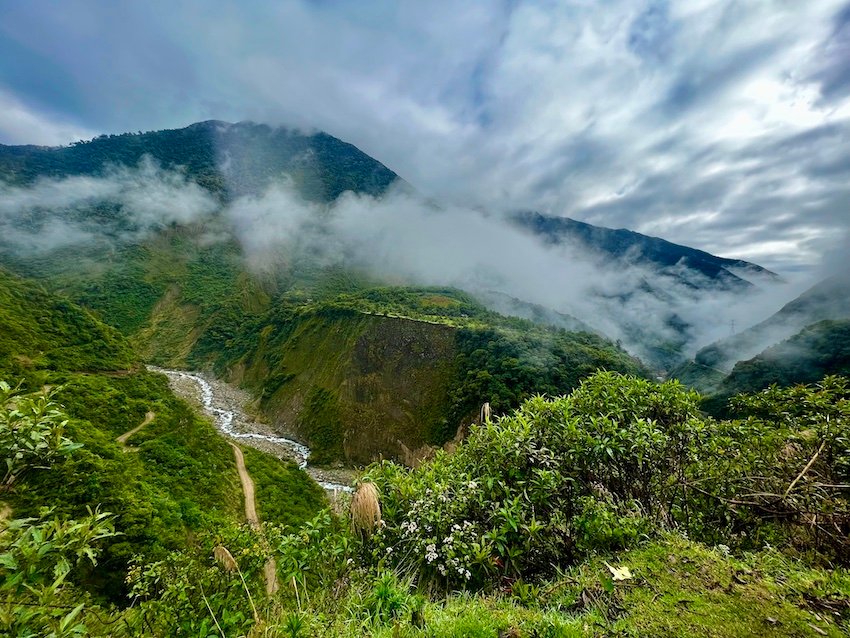



Dinner will be served once you return from the hotsprings. Enjoy sleeping under the stars at this tented camp.

Day 4: Santa Teresa – Llactapata – Hidroelectrica – Aguas Calientes: 22KM Hiking
Day 4 will take you through a variety of terrain from hard packed trail to muddy jungle tracts. You’ll first reach Llactapata – a high elevation Incan site where you’ll see your first glimpse of Machu Picchu. Then you’ll descend to the town of Hidroelectrica, where you’ll take lunch. Finally, you’ll walk on a trail along the train tracks that will lead you to the town of Aguas Calientes – the Gateway to Machu Picchu.

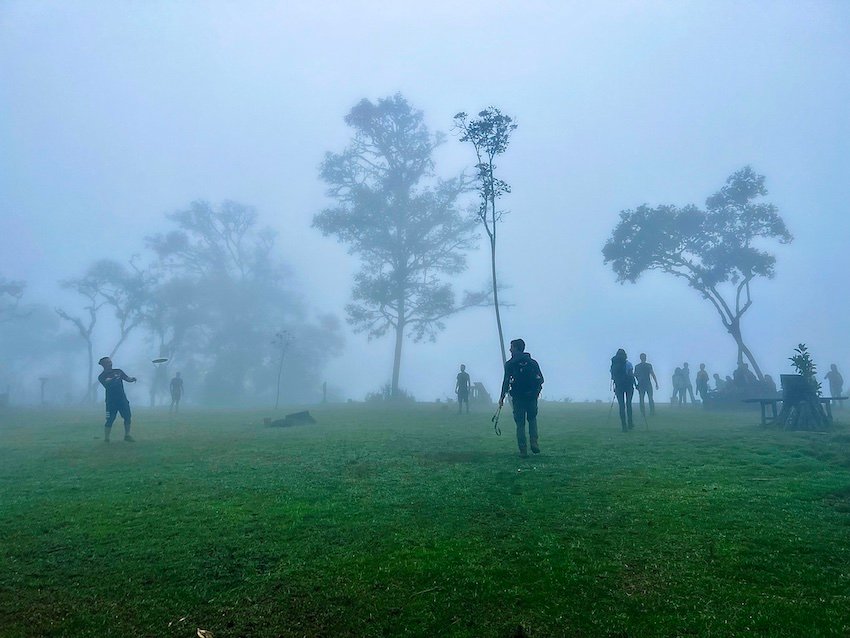



You’ll be staying the night in a budget hotel or hostel today, and will also have free time to explore. The town of Aguas Calientes is quite built up – so it’s going to be the first real civilization you’ll see since you started the trek. Don’t stay out too long though, as it’s going to be a 4am wake-up call to climb up to Machu Picchu tomorrow morning.


Make sure to prepare your daypack tonight for what you’ll need for the climb to Machu Picchu tomorrow. You can leave any unnecessary items at the hotel storage tomorrow morning, and pick them up after you complete your visit to Machu Picchu.

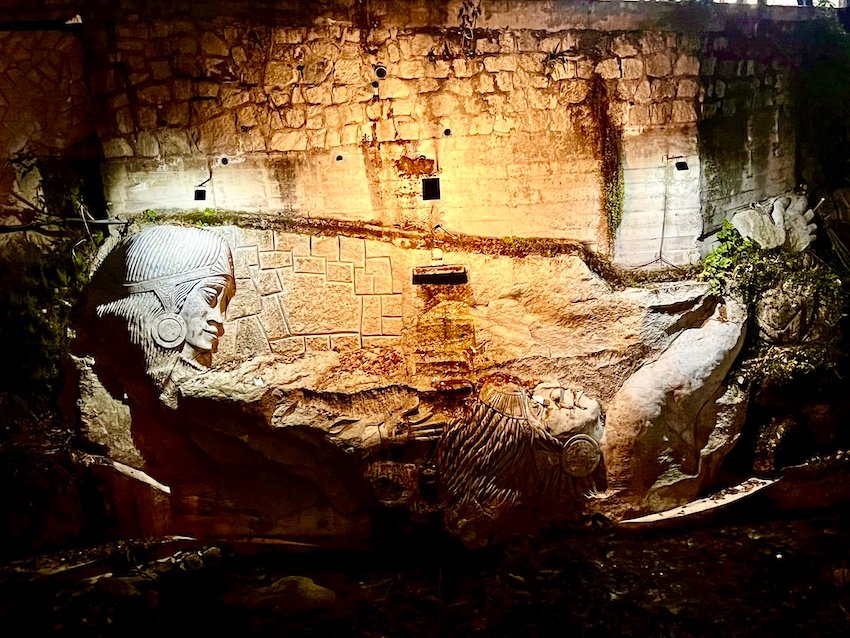
Pack lightly – wear layers – and note that you’re going to get quite sweaty climbing all the stairs up to Machu Picchu. If you tend to get sweaty I would recommend a change of clothes – or at least an extra t-shirt for when you get up to the top – as it will be quite cold in the morning hours. Bring a rainshell in case it rains, the garment can also help keep the wind off. Note that walking sticks are not allowed on Machu Picchu. If you’re injured, or not inclined to climb Machu Picchu tomorrow morning there’s also a bus you can take up from Aguas Calientes up to Machu Picchu (approx $12USD).

Day 5: Machu Picchu
Today starts eye-wateringly early at 4am. The tour company will likely arrange for breakfast to-go bags for you to bring along with you for the climb up to Machu Picchu. By 4:30am you should be starting your walk. Make sure you bring your entry tickets and passport with you – as these will be checked at the bridge leading to the climb to the citadel.

There are 1600 stairs leading to Machu Picchu – and they’re going to start to feel like you’ve done 10,000 steps as the fatigue sets in. If you’re anything like me – you’ll be a sweaty, exhausted mess by time you get to the entry gates of Machu Picchu. Join the waiting queue for the mountain to open at 6am.
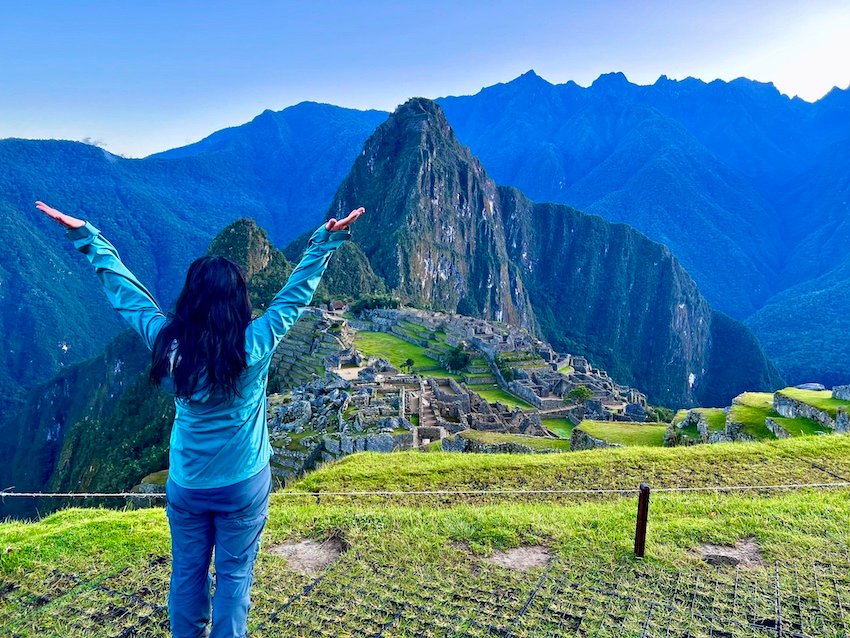
Your tour guide will be at the top waiting for you. Once you get into the citadel, your guide will take you on a 2 hour tour of the site. You’ll have an additional 2 hours to explore the site on your own – but you should leave by 12noon, in order to walk back down to Hidroelectrica where your bus transport back to Cusco will be waiting for you at 2:30pm. If you wish to stay longer than 12noon, or if you’re planning to climb Machu Picchu mountain or Huayna Picchu mountain as part of your visit, it would be highly recommended to consider upgrading to a train ride back to Cusco (as you can then take the train directly from Aguas Calientes), or stay an additional night in Aguas Calientes so things will not be so rushed.



Note the train will take you directly from Aguas Calientes to the town of Ollantaytambo, where you’ll be picked by a shuttle bus to Cusco.
Recommended Tour:
I would recommend this 5 day trek to Machu Picchu. It includes all the standard things most trekking tours will include (guide, food, accommodations, 5KG porter service), but it also includes your ticket into Machu Picchu as well as transportation back to Cusco. The trek has a 100% recommended rating on TripAdvisor, and the company itself is also well reviewed. One thing to look out when evaluating different trekking options is to look for a trek where the price also includes your ticket into Machu Picchu and also includes your transportation back from Cusco. There are good tours that are cheaper – but you’ll have to pay your own ticket into Machu Picchu, and will not include your transfer back to Cusco.

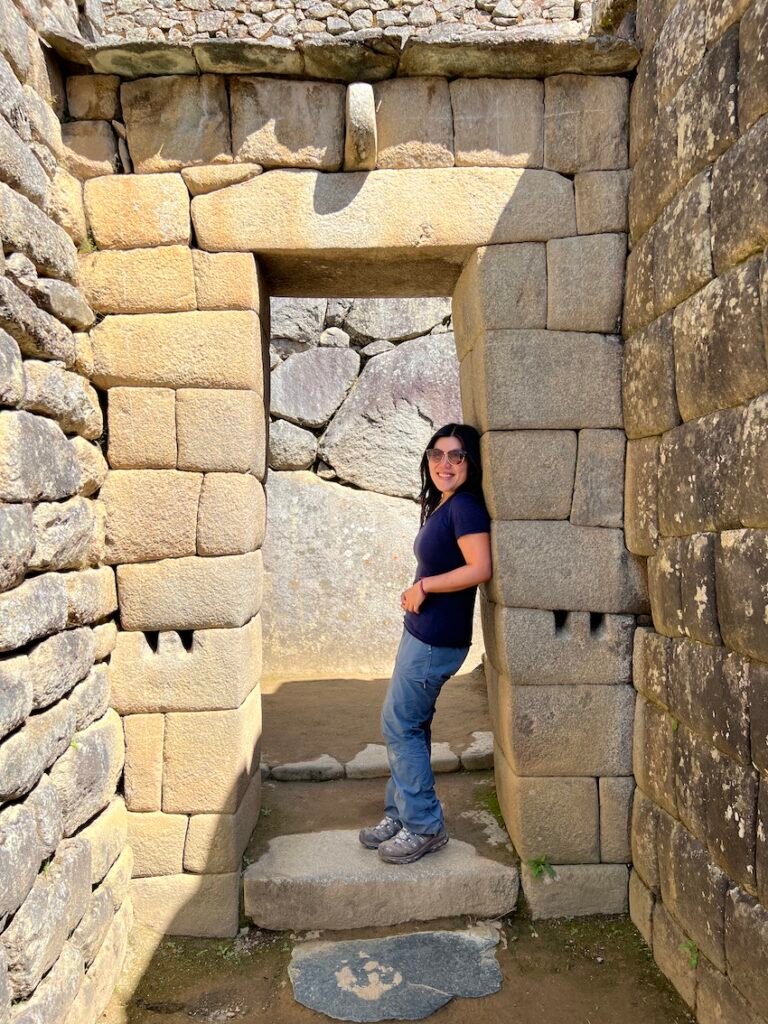


While I overall enjoyed my Salkantay trek to Machu Picchu, I would not recommend the company that I did my trek with for a variety of reasons. Firstly they overbooked our trek. They indicated that it would be a maximum of 16 people per group and we ended up being a group of 21. Which in theory is fine, but they also only provided the same amount of food as the groups who only had 16 people – so there was not enough food. Our guide personable but not very professional. He would disappear for large periods of time – leaving the assistant guides to pick up the slack. He was nowhere to be found when one of our group members had a fall in the evening at camp and needed help – as an example.

The straw that broke the camel’s back for me was when they left me at the train station Ollantaytambo – by myself. A shuttle service back to Cusco from Ollantaytambo is included with the train transfer option. When I talked to their tour-group coordinator at the train station about the fact that the bus left without me – they kind of said they would do something about it – but then just disappeared. I also texted and called our guide and our tour coordinator – and got no response. I only got back to Cusco because I was able to text my friends who were on one of the buses and they made the driver stop to call someone in the company who would actually pick up the phone. After which they finally sent me back to Cusco in a crowded shared-car.

I’m not going to name this company – but I will say its one of the largest companies in Cusco, and that many people go with for the Salkantay trek because it’s also the cheapest. It overall has very high ratings – but I think it has started to cut-corners because it already has thousands of good reviews – so a few bad experiences – if people choose to write about them – does not affect their overall standing. If you want to know the name of this company, you can send me a message, and I’ll let you know.
Given my experience – I would go with a similarly priced, but smaller company – where every review counts.
Packing List for the Salkantay Trek to Machu Picchu:
- Sturdy hiking boots ideally with ankle support. I use and love Saloman’s Quest 4D hiking boots (women/men) – they are considered some of the best in the market.
- Sleeping bag rated for at least 0C – either your own or rented from your tour agency.
- 20 – 30L hiking backpack. The Osprey Talon is one of the best hiking backpacks on the market. If you’re traveling light, consider this ultralight expandable 20L-30L backpack with lightweight back support and hip and chest straps – it also comes with a rain cover, is waterbladder compatible and only weighs 1lbs.
- Hiking poles I use these tri-fold hiking poles that can fit into my daypack when not in use.
- 2L water bladder (highly recommended so you don’t have to reach back or take off your backpack to get a drink of water. You’ll want to hydrate often given the conditions.
- Headlamp – for the evenings and for trekking in the pre-dawn hours. I prefer using a rechargeable headlamp to avoid disposable batteries.
- Power bank. I used this one on various multiday hikes including 6 days on Kilimanjaro. Avoid powerbanks over 20000mAh for trips involving air-travel.
- Sunscreen. I love using La Roche Posay SPF 50 for Kids a super-powerful sunscreen that’s also gentler on my sensitive skin.
- Insect repellent – for the evenings. I prefer Icardin-based repellents – just as effective as Deet, but much safer.
- Brimmed hat or ballcap
- Flip-flops or hiking sandals for showering and post-hike
- 5-6 T-shirts one for each day of the hike – plus an extra for post-hike. I love Icebreaker Merino t-shirts (women/men)– as they dry quickly and resist odors even after multiple wears.
- 1 pair shorts for the warmer days
- 1 pair of long pants for evenings
- Lightweight towel
- Bar shampoo – I use this as my everything soap.
- 2-3 pairs of hiking socks. I use Icebreaker Merino socks (women/men), as they have a lifetime guarantee. If your socks ever develop holes, just send open a claim online with some photos, and Icebreaker will send you a giftcard for the value of the socks!
- 1 pair of convertible hiking pants (men/women) – useful cool mornings that turn into hot afternoons.
- 1-2 long sleeve shirt (for the evenings)
- 1 hoody or mid-layer – if you’re hiking in the cooler months, you might need an extra layer to keep the chill off I the evenings
- 1 rainshell (just in case it rains, but it is also helpful for keeping the wind off in the evening, and also in the pre-dawn hiking hours. Consider these ultralight packable jackets (women/ men)
- Toque/beenie – in the predawn hours it will be chilly – it is useful to have a hat
- Silk sleep sack – useful if you are renting a sleeping bag.
- $100 – $200USD in cash. You’ll likely not need this much cash, but it’s good to have this amount handy in case you need to hire a mule. You’ll also need some cash buy snacks and water along the way.
Final thoughts on the Salkantay Trek to Machu Picchu:
The Salkantay Trek to Machu Picchu is a bucket list trek that combines a challenging 5 day trek that takes you through a beautiful variety of different eco-systems from jungle to high-mountain passes, to finally scale the interminable stone steps up to the wonder that is Machu Picchu. Some consider Salkantay to be an “alternate” to the Inca trail, but in my opinion, the trek can be much better option than the Inca Trail for those who enjoy nature, and are able to do a more challenging trek to Machu Picchu. The fact that the Salkantay Trek does not have to be booked months in advance, and at double the cost is also an added bonus.


